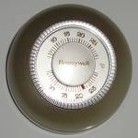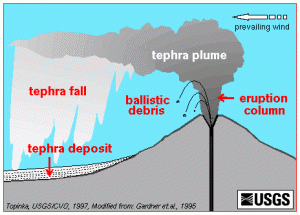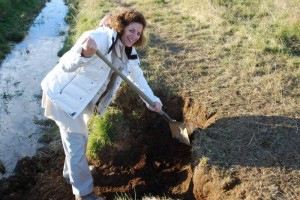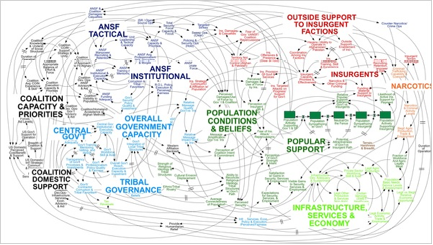What is that loopy thing boosting our economy?
Something called a “feedback loop” is boosting our economy.
 You can read about it yourself in Adam Lahart’s Wall Street Journal article (see How a Feedback loop is Providing a Boost, Dec. 23, 2010). Although Lahart never mentions the word “feedback loop” in the article itself (I assume you have to know what one is), he refers to this hopeful trend:
You can read about it yourself in Adam Lahart’s Wall Street Journal article (see How a Feedback loop is Providing a Boost, Dec. 23, 2010). Although Lahart never mentions the word “feedback loop” in the article itself (I assume you have to know what one is), he refers to this hopeful trend:
Consumer’s willingness to spend (and not save) is encouraging businesses to spend, which means businesses are hiring, which is sending a signal to consumers….
You guessed it. It’s okay to spend!
If Mr. Lahart were to have included a simple diagram in his article (and I wish he did), it might look something like this:
(The R in the middle lets you know this is a reinforcing feedback loop).
Here’s an even shorter version of this loop:
Consumer optimism generates business optimism, which generates consumer optimism and so on.
As a systems educator, I’m thrilled to see a “feedback loop” in the headline of a Wall Street Journal article. We sorely need more media coverage that moves beyond bullet points and mechanistic metaphors, to language and images that more closely match the interdependent, dynamic, complex reality of our world. I’m game for anything that helps people to develop systems literacy, that is, to “connect the dots” and see not just of the parts but the interrelationships, patterns, and dynamics as well of complex issues.
Mr. Lahart’s article was a tease to me. I really wanted him to use phrase “feedback loop” in his article and to show us, using some kind of image, how the loop worked. Perhaps he assumes that the average WSJ readers knows what a feedback loop is (loops of cause and effect) and that the loops come in two flavors: balancing feedback, which counteracts or lessens change, and reinforcing feedback, which amplifies or reinforces change. (In this article, he’s referring to the latter).*
At this point, you might be wondering: Why should I care about feedback loops?
Here’s why I care about them: Feedback loops help us to understand why things change and why they stay the same.
Mr. Lahart refers to a “vicious cycle… starting to turn virtuous” (feedback loops) to explain why and how consumer optimism is changing (in this case, increasing). Everyday challenges, from an escalating marital argument to resistance of a new school policy, all can be traced to the interaction of balancing (or self-correcting) and reinforcing feedback loops.
Here’s the good news: When you see and understand these loops, you then have a better chance of influencing them.
Okay, you still might be saying, I get it, but so what?
As a researcher, I’ve investigated children’s and adult’s intuitive understandings of complex systems and have found that deep misconceptions about complex systems persist, even among highly educated adults. In one study (see “Thinking about Systems”), a significant number of students and adults used “open-loop” or one-way causal thinking when “closed-loop” causality or feedback was present.
 This would explain why a significant number of Americans use their thermostats like a gas pedal. It’s too cold? Turn up the thermostat. Too hot? Turn it down. The temperature is increased or decreased suit our moment-by-moment needs.
This would explain why a significant number of Americans use their thermostats like a gas pedal. It’s too cold? Turn up the thermostat. Too hot? Turn it down. The temperature is increased or decreased suit our moment-by-moment needs.
When we understand balancing feedback, we set the thermostat and leave it alone, letting the internal feedback structure do its work and allowing the temperature to self-adjust to a desired temperature.
When we pay attention to balancing feedback, we’re less likely to over-correct and over-steer, perhaps allowing our children or our team to handle a problem themselves.
When we understand reinforcing feedback, we see that seemingly small changes can “grow” into big consequences.
We share scientists concerns about melting ice in polar regions.
We “get” that a vicious cycle is at work when a slight rise in atmospheric temperature begins to melt ice in the polar regions; the now bare ground absorbs more heat, causing even more ice to melt.
When we pay attention to reinforcing feedback, we also understand a successful person’s willingness to take on more work. “Success to the successful” sounds good, but when success brings more and more work, if a balancing loop isn’t brought into play, this reinforcing loop often results in a case of diminishing returns, also know as burn-out.
Mr. Lahart, thank you for using “feedback” in the title of your article. Next time, I encourage you to use throw in a feedback loop and maybe even use “feedback loop” in a sentence. We could all use the practice.
————————–
* Reinforcing feedback loops act as engines of growth. When reinforcing feedback is present, change in a system feeds back to cause even more change in the system. Think of the spread of a rumor, or a virus, or your saving account (if you actually save and don’t spend).
Balancing or self-regulating feedback return a system (like your body, an ecosystem, market systems) back to a state of equilibrium. By their very nature, balancing feedback works to bring things to a desired state and keep them there.
I’ll be writing more in this blog about ways to teach people of all ages about feedback loops. For other great resources, see the Waters Foundation site or check out the cover article by Steve Wilhite — “Concept Learning — Feedback Loops” in the Fall 2010 Creative Learning Exchange newsletter. (This particular article focuses on high school students).











